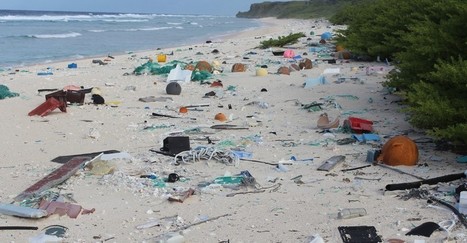"After water, concrete is the most widely used substance on the planet. But its benefits mask enormous dangers to the planet, to human health – and to culture itself. Our blue and green world is becoming greyer by the second. If the cement industry were a country, it would be the third largest carbon dioxide emitter in the world with up to 2.8bn tonnes."
GeoEd Tags: industry, sustainability, consumption, climate change, environment, architecture, resources.
Scoop.it Tags: industry, sustainability, consumption, climate change, environment, resources.



 Your new post is loading...
Your new post is loading...










